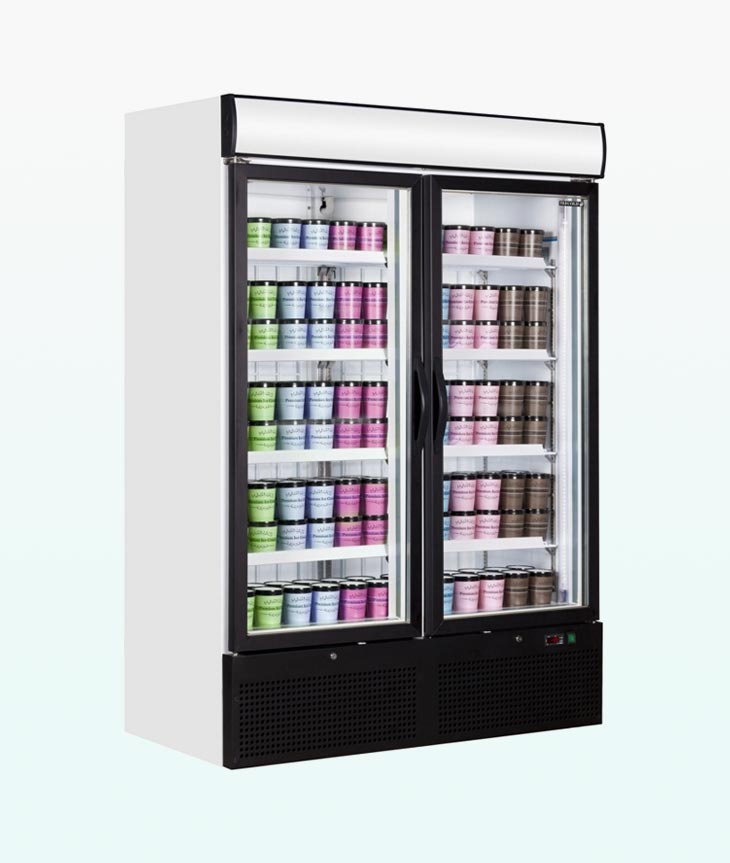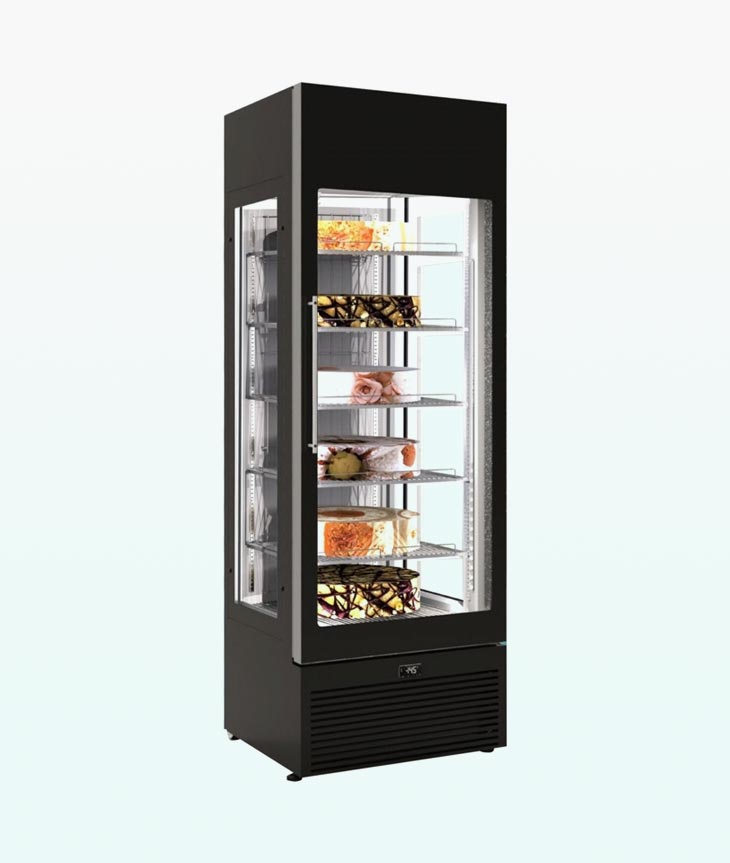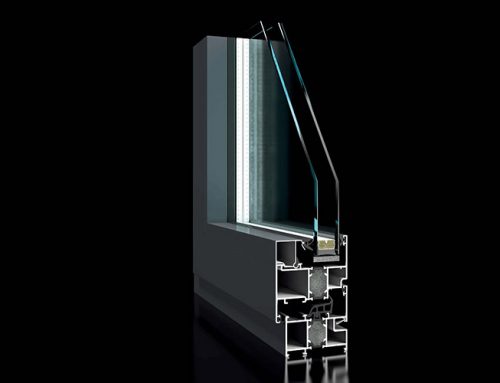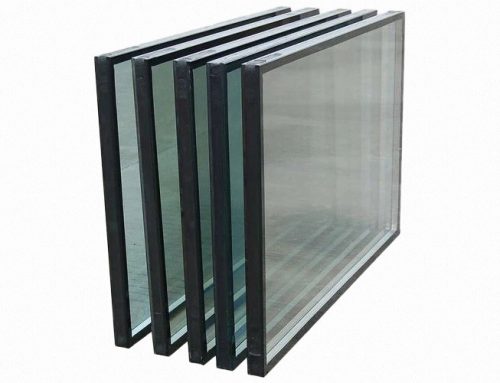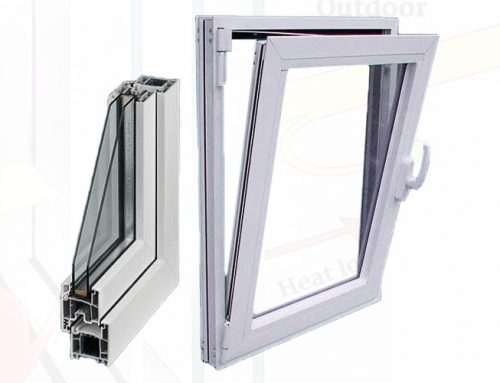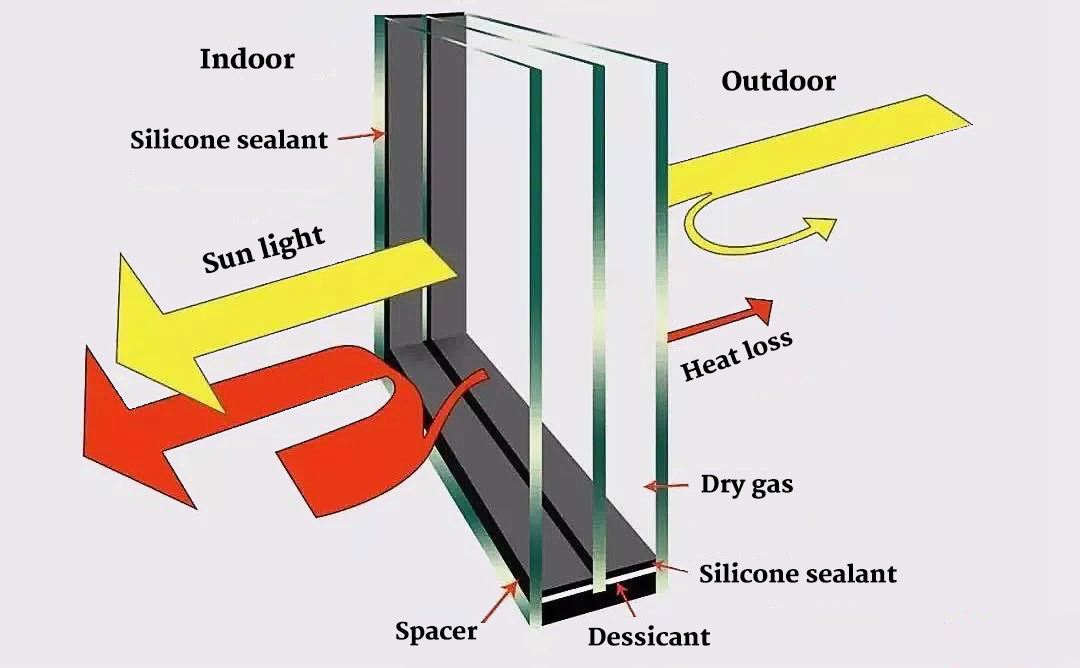
With the vigorous development of the construction industry, the proportion of building energy consumption in the total energy consumption of society continues to increase. In order to reduce energy consumption and achieve good energy-saving effects, it is necessary to use a large number of energy-saving building materials, and the application of hollow doors and windows is a link that requires great attention in the development of the current construction industry. In order to meet the requirements of beauty and lighting, the area of building doors and windows is getting larger and larger. The heat loss caused by glass in the heating environment in winter is very large, and the cold loss caused by glass in the case of cooling in summer is also very amazing. In view of these situations, effective use of energy-saving glass is of great value.

Properties of Insulated Glass
The insulated glass uses two or three pieces of glass, and uses high-strength air tight composite binder to bond the glass and the spacer. The thickness of the insulated glass gas layer should not be less than 6 mm, otherwise it can not produce the corresponding thermal insulation effect, but the thickness should not be too large, otherwise the whole glass will be too thick to meet the production requirements.
The performance of insulated glass is mainly reflected in:
1. Good thermal insulation performance. Conventional monolithic glass has a high thermal conductivity coefficient, and it is usually difficult to block the heat transfer between the room and the outside. Insulated glass introduces air into hollow cavity composed of multiple pieces of glass, and a relatively stable air layer can greatly reduce the thermal conductivity, reduce external and internal heat transfer, produce heat insulation and heat preservation effects and reduce energy consumption.
2. Have comfortable sensory and optical performance. Insulated glass has a high transmittance to visible light from the sun, and the transmittance is only reduced by 5% compared with ordinary glass. In addition, the reflection ratio of the insulated glass to visible light is relatively low, which makes the light passing through the glass appear softer, and can effectively reduce the light pollution caused by reflection.
3. It has strong energy saving and environmental protection performance. Building facade heat loss accounts for a large proportion of the total energy consumption. The introduction of insulated glass in the installation process of building doors and windows can significantly reduce the heat loss, especially in the cold winter season, to achieve the goal of energy conservation and environmental protection.
Energy Saving Principle of Insulated Glass

In nature, the main methods of heat transfer are radiation, convection and conduction. Besides limiting heat conduction and convection, insulated glass can also block heat radiation:
1. It can reduce the conduction and heat transfer because there is a layer of gas whose thermal conductivity is significantly lower than that of glass between several pieces of insulated glass, so it can significantly reduce the thermal conductivity of insulated glass.
2. The reason that can reduce the convective heat transfer is that the temperature difference between the two sides of the cold side glass plate is small, which can reduce the heat conduction of the cold side through air convection.
3. The main reason that can reduce the radiation heat transfer is the high emissivity of common glass, but if the low radiation film is coated on the surface, the original emissivity can be further reduced.
Insulated glass not only meets the requirements of energy saving, but also has strong light transmittance, which can meet the requirements of daylighting in daily life. The most obvious performance of insulated glass is thermal insulation. If single-layer glass is used in buildings, the greenhouse effect will appear in summer, which will lead to the increase of indoor temperature. In winter, because of the high thermal conductivity of glass, single-layer glass will also rapidly dissipate heat, which will lead to low indoor temperature.
Selection of Insulated Glass Doors and Windows
The energy-saving performance of glass is very outstanding, but also has a strong security. Among them, insulated glass has been widely used in hotels, high-grade residential buildings, office buildings, hospitals, schools and other places, as well as in cars, trains, ships and other fields. The location of use is different, the performance and size requirements of insulated glass are also very different. If it is a street-facing building, the insulation performance of insulated glass needs to meet the requirements; if it is in a cold area, the insulated glass needs to have strong heat insulation performance; the area of insulated glass in low-rise buildings can be appropriately increased, and high-rise buildings are exposed to wind If there is a difference in pressure, it is necessary to appropriately reduce the area of the insulated glass; when facing high heat and sound insulation requirements, it is possible to meet people’s application requirements by increasing the thickness of the hollow cavity, using inert gases, and improving the hollow cavity structure.
With its strong performance, insulated glass has a higher and higher market share, and its application fields are also expanding. At the same time, there are many inferior insulated glass products. This inferior product has a short lifespan, energy-saving effect and appearance cannot meet the requirements. Therefore, in the application process of insulated glass, it is necessary to pay attention to the identification of quality. Truly high-quality insulated glass has an energy-saving effect and has good sealing durability. In addition, when identifying the quality of insulated glass, it is necessary to focus on the quality of supporting materials and workmanship. In terms of appearance, the glass quality and overall misalignment of insulated glass need to be carefully observed; in terms of sealing, it is necessary to ensure that the sealing material meets the standard and can prevent water vapor from passing through. The corners, interfaces, etc. need to be checked for tightness.
In order to reduce building energy consumption, it is very important to introduce building materials to reduce energy consumption in the development and construction of the construction industry. As an important product of the development of energy-saving buildings, the correct and effective use of insulated glass can greatly reduce building energy consumption.

